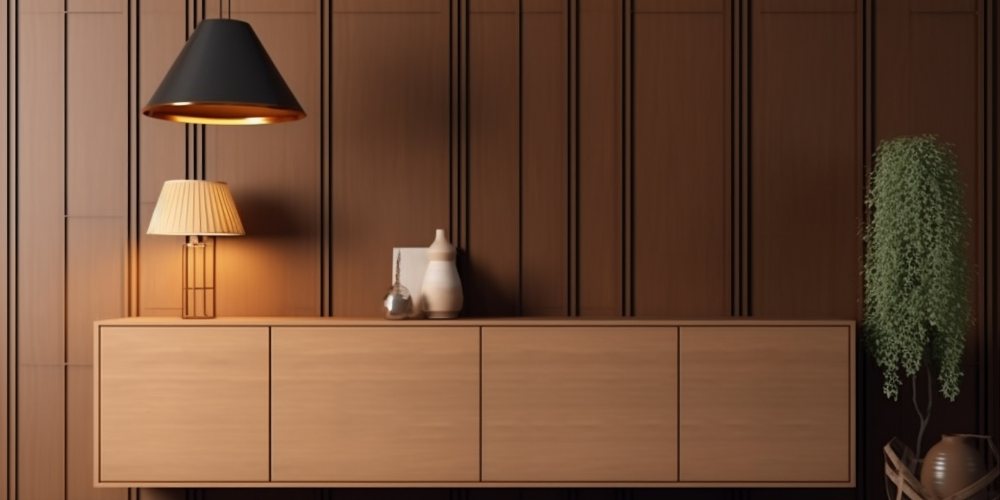Focal points may seem complex; but in reality they aren’t.
What is the focal point in room interior design? Can I create a focal point in my room? Will it make the room more welcoming?
As interior designers Bangladesh, we get asked such questions a lot.
Which is why we are publishing this blog post on focal points in room design.
By the time you finish reading this post, you will know:
- What a focal point is, and what its uses are,
- Which room elements you can use to create a focal point, and…
- What are some mistakes to avoid while designing a focal point in a room.
Let’s begin!
What is a focal point?

The best way to define the focal point of a room is: The focal point of a room is the “star attraction” of the room.
It’s an eye-catching element of the room to which your sight will be drawn as you enter the room.
And you can use it as a base around which you plan the rest of your room’s interior design.
What are the uses of a focal point?

There are many crucial room design uses of a focal point, including:
- As a defining feature of the room based on which you can plan the rest of the room design (yes, we just mentioned this).
- As a room element that balances the rest of the room.
- As a way to attract visitors’ attention and entice them to move from room to room in your home.
- As a way to make the room feel warm and inviting. Arranging room furniture and accessories around the focal point can give the room a comforting feel.
Finding the focal point of your room
How do you find out if your room already has a focal point? Don’t worry, you don’t need to be an interior designer to do that.
Stand in the main entrance of the room, and look around. Is there a particular point or feature in the room that immediately draws your attention?
If there is, great! That is your room’s focal point.
If there isn’t, well…
Room elements that you can use as a focal point

Think of your room as a blank canvas on which you can be creative with room decor. Imagine where it would be the best to have a focal point at which visitors will find their sight drawn.
Before we start on the various room elements, remember the perennial advice: shop your own home for any furniture, accessories and even supplies that you need, before you spend money on outside purchases.
Artwork
Amazing artwork that grabs attention can be a great statement piece for your room.
In fact, many owners don’t want to repaint their walls or use wallpaper. For them, this is a great way to liven up otherwise plain looking walls.
Good artwork can set the mood inside your room and be a great point around which to plan other room decor aspects.
Make sure the artwork’s colours match the wall and the rest of the room.
Design tip: You can use accent/feature lighting to emphasise the artwork. Fixtures, picture lights and track lights are some other effective ways of highlighting artwork.
Display shelves
Display shelves are another easy way to create a focal point in your space, just like eye-catching artwork.
You can use them to display everything from artwork and family pictures, to accessories, lights, and even plants.
Pro tip: Floating shelves are a great way to fill unused space.
Get in touch with professional furniture designers if you want to create new display shelves from scratch.
Backsplashes (for the kitchen)
First of all, what is a backsplash? A backsplash is a panel placed behind a stove to protect the wall from splashes from whatever is being cooked on the stove. As you can guess, they are found in kitchens.
Think of the backsplash as the kitchen’s equivalent of artwork. In addition to being convenient and saving kitchen walls from repeated splashes and discolouration, backsplashes can be used as a focal point for your kitchen.
Just like with the artwork, use bold colours and/or patterns to transform a plain backsplash into an accent piece.
Accent walls
Accent walls are an interior designer favourite for setting focal points. That’s because you can get creative and use the wall to personalise your room.
A quick and easy way of transforming a wall into your statement feature is to just repaint it, or use wallpaper. Either way, go for bold colours and patterned design.
Design tip: If you’re creating a new accent wall, make sure you create it on the wall that is farthest from the main entrance into the room.
Pro tip: If you have some prominent artwork in the room, use one or two colours from that on your accent walls.
Statement furniture
You may already know this, but eye-catching furniture can be real show-stoppers in your room.
Think of large dining tables in dining rooms, well-designed and comfy beds in bedrooms, and vanities in your bathroom.
You can add some accent, like a centrepiece for the dining table and decorative pillows for the bed.
Colour planning (contrasting colours)
It’s pretty simple, really.
Study your artwork, furniture and other decor pieces (especially the focal point) and think what base colour would set them off.
And then colour your walls in that base colour.
Revamping your room colours like this can help you model your room around the focal point while making it look brighter and more inviting.
Typical focal point mistakes that you should avoid

We always say this: in addition to what TO do, you should also know what NOT to do. Applicable to pretty much any topic.
So, here are a few things to avoid while creating a focal point in your room.
Multiple focal points
A room should always have a single focal point.
In dual-use rooms, for example if you use the same space as both a living room and a dining room…
It may be tempting to have two focal points, pointing to the main areas in the room where people gather (the main sofa and the dining table in our example).
But you should avoid that as it takes away the key idea of a focal point – a single point or area in the room to which people’s eyes are drawn.
Ignoring lighting
A focal point should always be well-lit. It’s a way to draw attention.
If you’re looking to emphasise natural light in your living space, here are some window solutions that can maximise the natural light coming into your room and illuminating your focal point while ensuring some privacy.
Not framing the area
Remember to add room decor elements that are necessary to draw attention to the focal point of your room.
Add extra detail around your focal point to help it stand out.
Focal points in room design – a final word
A focal point is a point or space in your room that’s essentially the statement piece of the space – it grabs the eyeballs of anyone entering the room.
Selecting a focal point and designing it to have maximum impact is a great way to increase the decor quotient of your room.
Once you locate a potential focal point, you can use the above tips to improve your room decor, almost like it was designed by a professional interior designer.











